Making pulled pork isn’t as hard as some people would have you believe. All you need is a pork butt, some seasoning, a good BBQ sauce, time and a little patience. Follow along as I show you how to smoke a pork butt and prep it for sandwiches or as a stand alone main course. Along the way I’ll add a few tidbits and advice on how to keep yourself out of trouble.
Step One.
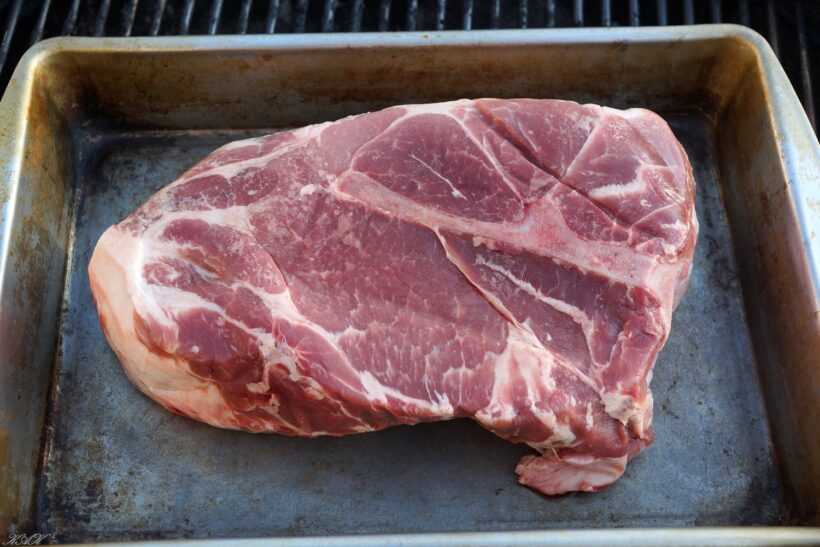
For this go around I decided to start with a 4 pound bone in pork butt from Schneider Farms. It didn’t need any trimming so all I needed to do was season it with a rub. I decided to use two different rubs blended together. I used Grill Heads Queen Bee and Daniel’s Competition Rub. You can use any rub you like for this and of course experimenting with different rubs is always fun. Sprinkle your rub top, bottom along the sides and in every nook and cranny you find. After you apply a liberal dose of your preferred rub let it sit for an hour or two in your refrigerator. What you’re doing is basically a dry brining which brings moisure to the surface and after a while the seasoning gets pulled back into the meat. Applying a liberal dose of rub is also necessary to get that nice bark that every pitmaster strives for.
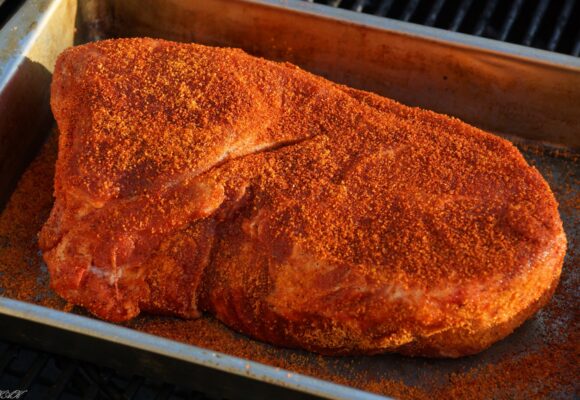
Step Two
Now that you have your pork butt seasoned it’s time to setup your smoking weapon of choice. I use a Weber 22 inch kettle with the charcoal positioned in a snake pattern. By using this method you can get a low and slow heat source that can last 10 plus hours without the need to refuel mid cook. I used chunks of hickory wood placed around the edge of the snake to produce the wood smoke that’ll get “soaked up” by the meat as it cooks. In another article I’ll explain what the snake method is and how to set it up. For now the important thing to remember is you’ll need a fire that’ll sit between 225 to 275 degrees at the cooking grate for a good long while. This applies to a pellet grill, stick burner or an electric smoker. The photo below is what this pork butt looked like after about 6 hours on the smoker at an average grate temperature of 260 degrees. The bark is looking good and the internal temperature is getting where it needs to be.
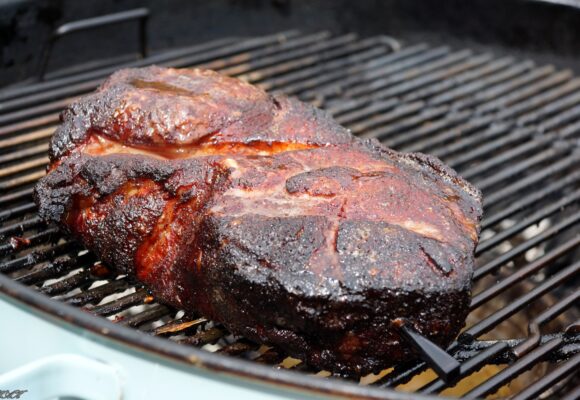
Step Three
Let the smoke roll! With a Weber kettle there’s a certain amount of vent adjusting that you will have to do to get a stable temperature at the cooking grate. I prefer to keep my temperature around 250 to 260 degrees. Low enough to smoke meat well and hot enough to shave some cooking time from the process. It also helps to get past the dreaded stall too. You’ll notice in the photo above there’s something sticking out of the meat in the lower corner. That’s a Meater Plus temperature probe. It measures both the ambient temperature at the grate and the internal temperature of the meat. Knowing both of these numbers is very important to a successful cook. At the grate you could use a simple oven thermometer. Any kind of meat thermometer will get you by for the internal temperature. The thing is the more you open the lid on your smoker the longer it’ll take to finish. You also run the risk of a runaway fire and other heat management issues. A pork butt takes 60-90 minutes per pound to get to an internal temp for pulling. So once you get that grate temp set it’ll be at least 4 hours before you even check the temperature of this pork butt. So basically you would do well to get yourself a temperature monitoring system that you can check without opening up that lid. Enough of that and back to finishing up the pork butt smokin’ session. ..
A pork butt can be done and ready to pull at a temperature between about 190 to 208 degrees. There’s other indicators that let you know when it’s done. Probe testing for tenderness, twisting the bone if there is one and of course the fork test. I started checking the other indicators when the Meater probe hit 190 internal. I use a second temperature probe to check the meat in different spots. My choice for this is a Thermapen One. It’s accurate and quck responding. I also use it to check for probe tender. When it slides into the meat with little to no resistance that’s probe tender. This pork butt was probe tender at 203. So far so good. Take a fork and stab the meat and give it a good twist. If it comes apart and shreds easily you’re basically done and it’s ready to turn it into pulled pork. Twisting the bone can be an indicator that all is well too but don’t rely on it solely either. 7.5 hours in and my pork butt was ready to take off the heat to rest a while before pulling it apart.
Step Four
Allow the meat to cool down for a while before you start pulling it. At around 160 degrees is when I’ll begin the process. I’ll use a couple of forks or “bear claws” for this. Twist and turn and rake away until you have it completely pulled apart. If you come across something like a chunk of hard fat that you don’t like pick it out and toss it. Once you have it shredded take some of your favorite BBQ sauce and mix it into your pulled pork. I used my St. Louis style BBQ sauce cut with some apple cider vinegar and water. I wanted a flavor profile that was a nod to the Carolina region’s way of doing things. A little goes a long way! Don’t oversauce it. That’s all there is to making pulled pork. Now you’re ready to make some sandwiches or just pile it high on a plate and enjoy!
Here’s where to go to get the things I used for this cook. The pork butt came from Schneider Farms in Hermann Missouri. The Grill Head and Daniels rub along with the Two Men and a Garden pickles can be purchased at Crane’s Country Store in Williamsburg Missouri. My BBQ sauce can be purchased right here when I make my next batch.


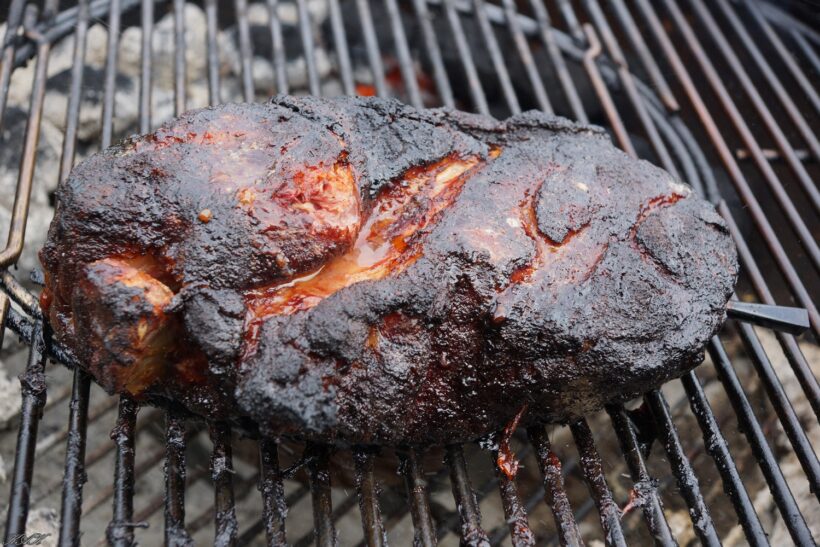
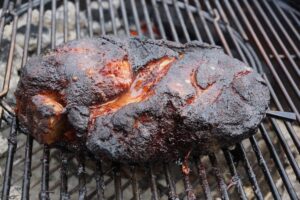
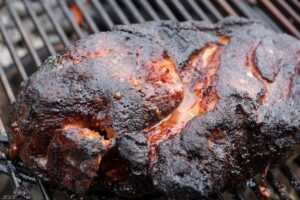
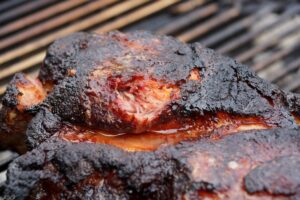
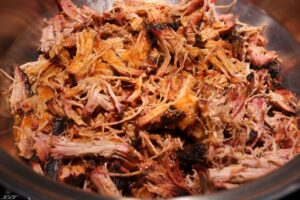


Leave a Reply